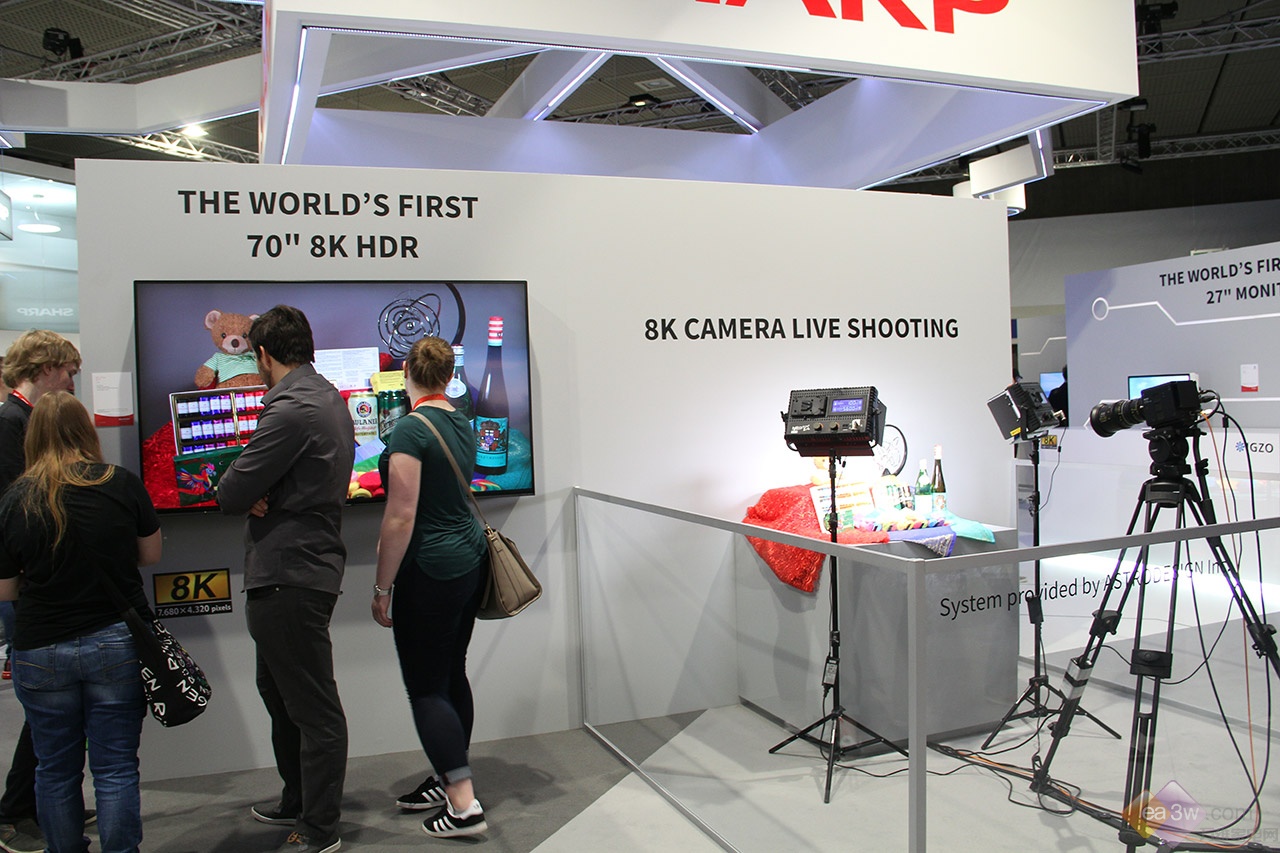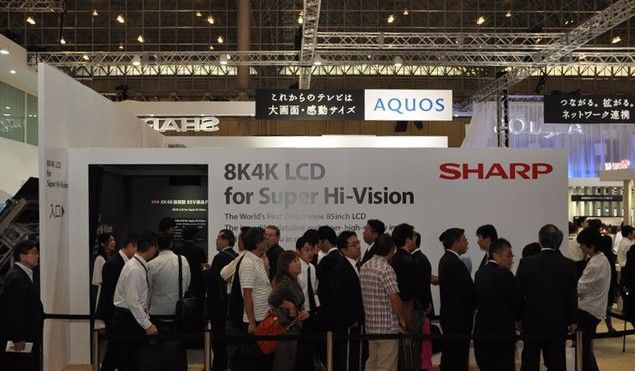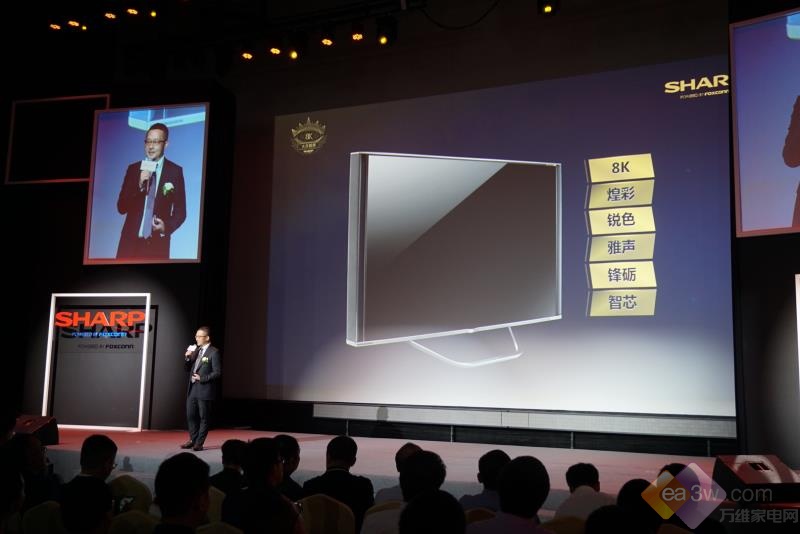Have you ever wondered if the grape you see on your screen one day could feel more real than the apple in your hand? This isn’t just a distant dream—it’s already happening.
We know that 4K resolution matches what our eyes can fully perceive, but 8K takes it to another level—4.3 times higher. This means that when you watch an 8K image, it becomes nearly indistinguishable from reality. No wonder some people say 8K is the future, and even celebrities are questioning their own lives in front of such immersive visuals.

Is 8K TV really taking off? According to IHS, by 2019, over 1.4 million 8K TVs were sold globally. With the Tokyo Olympics as a major driver, sales are expected to jump to 2.1 million units in 2020. Japan’s NHK will even broadcast the Olympics in 8K. What’s interesting is that Chinese consumers are leading the charge, thanks to the growing middle class.
Chinese buyers have always been quick to adopt new tech—just look at how quickly full-screen phones took over the market. This suggests that 8K TVs have a bright future in China. So, is the 8K market ready for prime time?
If you think 8K is just about TVs, you’re missing the bigger picture. It’s not just hardware; content and infrastructure also need to catch up. Without enough 8K content, the experience won’t be satisfying. The path to 8K adoption is still rocky.
Let’s start with the hardware. In 2011, Sharp showcased its first 85-inch 8K TV at CEATEC in Japan. Then, at CES 2013, Sharp launched a massive 85-inch model that made waves in the tech world. Since then, brands like Samsung, LG, Changhong, Hisense, Skyworth, and Konka have all displayed 8K TVs at various events—but most were just demos, not yet available for sale.

The first consumer-grade 8K TV came out in China in August 2017, when Foxconn enabled Sharp to launch the LCD-70SX970A. Priced over 60,000 yuan, this top-tier model was available through e-commerce platforms. This marked Sharp’s shift from being known as the “father of LCD†to the “father of 8K.â€

The key to 8K is the panel supply. Currently, only a few production lines worldwide can make 8K LCD panels. Companies that master this technology, from R&D to after-sales service, will dominate the market.
Foxconn and Sharp are planning a new 10.5-generation panel plant in the U.S., focusing on large panels over 65 inches. This supports Sharp’s 2018 8K TV launch. Additionally, a similar plant in Guangzhou is set to begin production in 2019, boosting the supply chain for 8K TVs.
Content is equally important. The 2020 Tokyo Olympics will use 8K live broadcasts, giving a huge boost to 8K adoption. Sharp has also been exploring 8K content, like working with Vogue Film for the first 8K fashion video, and broadcasting the WBO championship in ultra HD. They're even looking into integrating 8K with gaming.
Another big step is the reduction in 8K camera weight. Sharp aims to cut the size from 40kg to just 5kg by the end of the year, making 8K filming more accessible and cost-effective.
As for transmission, 4K is already manageable. With 5G’s development, 8K streaming should become smooth and affordable soon. Just like 2K and 4K before it, 8K will eventually enter millions of homes, becoming a standard part of everyday entertainment.
These are Valve-Regulated Lead-Acid (VRLA) batteries, often using Absorbent Glass Mat (AGM) technology.
Known for their robustness and cost-effectiveness, they are used in a range of electric vehicles, though their weight and lower energy density compared to newer technologies are notable.
LithiumIon Batteries:
Dominating the modern EV market, lithium-ion batteries are prized for their high energy density and efficiency.
They offer longer life spans and faster charging times compared to lead-acid batteries, making them ideal for electric cars and high-performance vehicles.
Nickel-Metal Hydride (NiMH) Batteries:
These batteries are often found in hybrid vehicles.
They provide a balance between cost, energy density, and environmental friendliness, though they are gradually being overshadowed by lithium-ion technology.
Lithium Iron Phosphate Batteries:
Known for their safety and stability, these batteries are gaining popularity in applications where safety is a major concern, such as in e-bikes and electric scooters.
They offer a good balance between life span, energy density, and safety, making them a preferred choice in specific segments of the EV market.
Each type of motive battery brings its unique strengths and is chosen based on the specific requirements of the vehicle and its intended use. Together, they play a pivotal role in the advancement of eco-friendly transportation and the broader adoption of renewable energy technologies.
Durability and Longevity: These batteries are engineered to endure numerous charge-discharge cycles over their lifespan, making them a reliable source of power for electric vehicles.
Fast Charging Capabilities: Modern motive batteries often feature advanced technologies that allow for rapid charging, reducing downtime and enhancing the usability of electric vehicles.
Environmental Friendliness: By employing rechargeable systems and often utilizing less toxic materials, motive batteries contribute to reducing pollution and dependency on fossil fuels.
Safety Features: Safety is a critical aspect, and these batteries are equipped with various mechanisms to prevent overheating, overcharging, and other potential hazards.
Electric Trains: Motive batteries are an integral part of modern electric train systems, providing efficient and eco-friendly mass transit solutions.
Electric Bicycles and Scooters: These batteries enable the widespread use of electric bikes and scooters, particularly useful in urban areas for short-distance travel.
Golf Carts and Utility Vehicles: In recreational and utility vehicles like golf carts, motive batteries offer a silent and pollution-free mode of transport.
Through these enhanced features and varied uses, motive batteries are leading the charge in the electric mobility revolution. Their ongoing development and improvement are vital for achieving long-term, sustainable transport solutions globally.
Motive batteries are specialized energy storage devices engineered to deliver high power output, endurance, and reliability for the propulsion of various types of electric vehicles. Unlike conventional batteries used in stationary applications or for small electronics, motive batteries are built to withstand the rigorous demands of continuous movement, vibrations, and temperature variations.
What is a motive battery?
A motive battery stands out as a unique type of battery, tailored specifically for propelling electric vehicles. These batteries are distinct from those used in stationary settings or smaller electronics. They are designed to withstand the challenges of continuous operation, including constant movement, varying temperatures, and vibrations. They represent a critical component in the shift towards eco-friendly transportation and renewable energy.Types of Traction Batteries
Sealed Lead Acid Batteries (VRLA/AGM):These are Valve-Regulated Lead-Acid (VRLA) batteries, often using Absorbent Glass Mat (AGM) technology.
Known for their robustness and cost-effectiveness, they are used in a range of electric vehicles, though their weight and lower energy density compared to newer technologies are notable.
LithiumIon Batteries:
Dominating the modern EV market, lithium-ion batteries are prized for their high energy density and efficiency.
They offer longer life spans and faster charging times compared to lead-acid batteries, making them ideal for electric cars and high-performance vehicles.
Nickel-Metal Hydride (NiMH) Batteries:
These batteries are often found in hybrid vehicles.
They provide a balance between cost, energy density, and environmental friendliness, though they are gradually being overshadowed by lithium-ion technology.
Lithium Iron Phosphate Batteries:
Known for their safety and stability, these batteries are gaining popularity in applications where safety is a major concern, such as in e-bikes and electric scooters.
They offer a good balance between life span, energy density, and safety, making them a preferred choice in specific segments of the EV market.
Each type of motive battery brings its unique strengths and is chosen based on the specific requirements of the vehicle and its intended use. Together, they play a pivotal role in the advancement of eco-friendly transportation and the broader adoption of renewable energy technologies.
Features of Electric Vehicle Battery
High Energy Density: Motive batteries are designed to store a large amount of energy in a relatively small space, enabling electric vehicles to travel significant distances on a single charge.Durability and Longevity: These batteries are engineered to endure numerous charge-discharge cycles over their lifespan, making them a reliable source of power for electric vehicles.
Fast Charging Capabilities: Modern motive batteries often feature advanced technologies that allow for rapid charging, reducing downtime and enhancing the usability of electric vehicles.
Environmental Friendliness: By employing rechargeable systems and often utilizing less toxic materials, motive batteries contribute to reducing pollution and dependency on fossil fuels.
Safety Features: Safety is a critical aspect, and these batteries are equipped with various mechanisms to prevent overheating, overcharging, and other potential hazards.
Motive Power Battery Usage Scenario
Electric Vehicles (EVs): They are predominantly used in passenger cars, offering a cleaner alternative to internal combustion engines.Electric Trains: Motive batteries are an integral part of modern electric train systems, providing efficient and eco-friendly mass transit solutions.
Electric Bicycles and Scooters: These batteries enable the widespread use of electric bikes and scooters, particularly useful in urban areas for short-distance travel.
Golf Carts and Utility Vehicles: In recreational and utility vehicles like golf carts, motive batteries offer a silent and pollution-free mode of transport.
Through these enhanced features and varied uses, motive batteries are leading the charge in the electric mobility revolution. Their ongoing development and improvement are vital for achieving long-term, sustainable transport solutions globally.
electric vehicle battery,traction batteries,SLI battery,motive battery,Industrial Motive Power Batteries,Electric Motion Battery
OREMA POWER CO., LTD. , https://www.oremapower.com